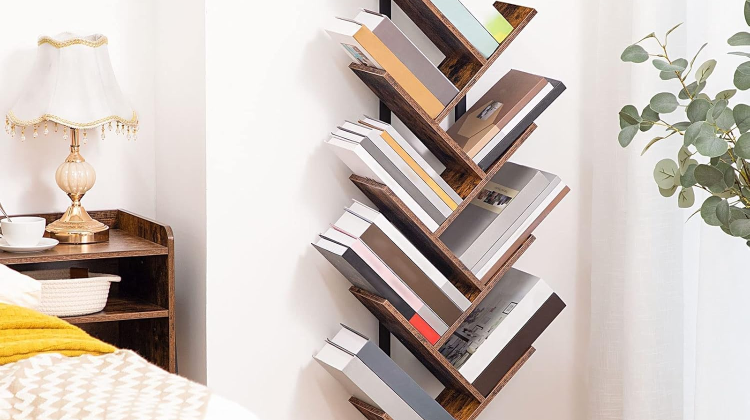
Your apartment feels cramped. You can’t fit a proper dining table. Working from home means setting up your laptop on the couch. A guest staying over means someone’s sleeping in your living room.
This isn’t just inconvenient. It’s the new normal.
The Small Space Reality Check
The numbers tell a clear story. In 2018, the average new apartment in the United States measured just 941 square feet—down 5 percent from the previous decade. Urban rental markets continue shrinking. For renters and owners in cities like New York, Los Angeles, and San Francisco, the squeeze is real and getting tighter.
But here’s what most people miss: you don’t need a bigger apartment. You need furniture that works harder.
Two Categories That Change Everything
There’s a fundamental difference between furniture that simply sits there and furniture that transforms.
Modular furniture consists of separate components you can assemble, reconfigure, or scale based on your actual needs. A modular sofa isn’t locked into one shape. You can arrange it as an L, a U, or multiple individual pieces depending on your floor plan and mood.
Transforming furniture does something different. It fundamentally changes form or function. A console table that extends into a dining table. A coffee table that lifts into a workstation. A wall-mounted desk that folds completely flat. Each piece replaces what would traditionally require two or three separate items.
This distinction matters because it’s how you recover usable square footage.
The 100+ Square Foot Formula: Here’s How It Works
The claim sounds audacious. Gain over 100 square feet of functional space in an apartment that doesn’t have it?
It’s not magic. It’s math.
The mechanism is called the multiplier effect. One multifunctional item replaces the need for two or three single-purpose pieces. When you eliminate those extra items, you recover the floor space they would have permanently occupied.
Research comparing dedicated single-function furniture with multipurpose alternatives shows the latter occupy 25 to 80 percent less space.
To measure this accurately, you need two metrics:
Floor Area Recapture (FAR): The physical square footage you clear when a transforming piece folds, conceals, or moves. A wall-mounted desk that folds flat recovers its entire floor space when closed.
Functional Volume Gain (FVG): The creation of a dedicated functional zone that didn’t exist before. A lift-top coffee table creates an office zone where none existed. A modular sofa with hidden storage creates a storage zone without buying a separate cabinet.
Here’s a real calculation:

That’s your 100 square feet. Not theoretical. Achievable.
Seating Systems: Building Your Foundation
The living room is ground zero for small space optimization. It’s where you spend the most time. It’s where guests sit. It’s often where you work.
The Honbay U-Shaped Modular Sectional Sofa (~$900)
HONBAY Modular Sectional Sofa U Shaped Sectional Couch [click to view…]
This is one of the top Amazon choices for small space living, and the reasoning is straightforward.
A modular sectional gives you something a fixed sofa cannot: reconfiguration. You’re not locked into one layout. You adjust it as your needs change.
The Honbay’s key advantage sits under the cushions: hidden storage compartments. Blankets, extra pillows, board games, clutter—they disappear. This isn’t just convenient. It directly contributes to Functional Volume Gain by eliminating the need for a separate storage chest or cabinet.
The solid wood frame signals durability. In an apartment where you might move every few years, or where furniture takes daily abuse, this matters. The U-shaped configuration maximizes seating within a manageable footprint.
Amazon Availability: Yes, prime eligible
Price Range: $850–$950
Key Specification: Highly variable configuration; hidden storage; solid wood frame
The Chireca 80-Inch Convertible Sectional Sofa ($199–$239)
80″ Convertible Sectional Sofa [click to view…]
Budget doesn’t mean you sacrifice functionality.
This is an L-shaped 3-seat couch engineered for extreme space constraints. The reversible storage chaise can be positioned wherever your layout demands. More importantly: it’s a convertible sleeper sofa. You get seating, storage, and guest sleeping accommodations from one piece.
At $199–$239, this isn’t an investment. It’s a tactical move toward space optimization that won’t break your budget.
The trade-off? It won’t last 15 years like a premium sectional might. But for an apartment dweller moving every 2-3 years, or someone testing a small space setup, the value is undeniable.
Amazon Availability: Yes
Price Range: $199–$239
Key Specification: L-shape; reversible storage chaise; sleeper function
Quick Comparison: Modular Seating for Small Spaces

Transforming Tables: The Real Space Multiplier
A coffee table is just a coffee table. Unless it isn’t.
The WLive Lift-Top Coffee Table
WLIVE Lift Top Coffee Table [click to view…]
This is where transformation happens. The tabletop rises to create a workspace. Hidden compartments store remotes, paperwork, and clutter. When you’re done working, it lowers back to normal height.
The mechanism quality separates good transforming furniture from junk. The WLive uses a soft-close design—the tabletop raises and lowers effortlessly and silently. This isn’t aesthetic preference. Quality mechanisms keep the piece functional after hundreds of uses.
Built from MDF and a sturdy metal frame, it supports up to 200 pounds when lowered. Dimensions are approximately 41.7 inches wide by 21.3 inches deep—a standard coffee table footprint. But it does the job of three separate items: coffee table, desk, and organized storage.
Space Gain: Eliminates the need for a small desk (20 sq ft saved); integrated storage reduces visible clutter
Amazon Availability: Yes, multiple color options
Price Range: $150–$250
Key Specification: Soft-close mechanism; 200 lb capacity; 41.7″W x 21.3″D
Folding Dining Tables: Reclaiming 50+ Square Feet
A permanent dining set for 4-6 people demands about 60 square feet.
Folding dining tables—from brands like Best Choice Products and Homcom available on Amazon—use drop-leaves. The table serves as a narrow console against a wall when closed. Extend one leaf and you have a two-person dining or work surface. Extend both and you’re hosting dinner for four to six.
This flexibility recaptures approximately 50 square feet of permanent dining area.
The practical consideration: Do you want storage built into the table for the leaves, or do you keep them in a closet? Built-in storage saves space but adds bulk. Separate storage requires dedicated closet space but keeps the table sleeker.
For small apartments where 2-4 people eat most meals, a model without internal storage is usually more practical. You’re not deploying the extra leaves every day anyway.
Going Vertical: Making Walls Work
The single best decision for small space optimization is this: stop fighting for floor space. Use the walls.
Wall-Mounted Drop-Down Desks
HOMCOM Fold-Out Convertible Writing Table [click to view…]
The Homcom Fold-Out Convertible Writing Table doubles as a wall cabinet when closed. Deploy it and the desk extends to 39 inches. Fold it closed and it shrinks to just 20 inches deep.
That 19-inch difference? That’s the difference between a workspace and open floor space.
This wall-mounted strategy moves your entire home office function to the wall plane. Your floor stays clear. Your living area functions normally when you’re not working.
Similar models from Zytty, TEAMIX, and HOOBRO operate on the same principle.
Space Gain: Eliminates dedicated floor footprint for a home office (20 sq ft)
Amazon Availability: Yes
Price Range: $150–$300
Key Specification: Folds to 20″ deep; extends to 39″ long; multi-functional wall storage
Vertical Shelving: The HOOBRO 9-Tier Tree Bookshelf
HOOBRO Tree Bookshelf [click to view…]
Traditional bookshelves are floor hogs. They consume depth and width, blocking foot traffic in small apartments.
The HOOBRO takes a different approach: go vertical. The footprint is just 7.9 inches deep by 13.4 inches wide. That’s narrow enough to fit in corners or against short walls. But it reaches 45.6 inches high and holds 20-30 books across nine tiers.
The height-to-depth ratio creates stability concerns, which is why the design includes an anti-toppling device. This isn’t marketing fluff. It’s engineering that keeps your books—and your apartment—safe.
Space Gain: Minimal floor space cost; reclaims vertical volume
Amazon Availability: Yes
Price Range: $60–$100
Key Specification: 7.9″D x 13.4″W x 45.6″H; holds 20-30 books; anti-toppling device
The Often-Forgotten Zone: Over-The-Toilet Storage
The bathroom has cubic space you’re not using. The Kalrin Over-The-Toilet Storage Rack reclaims it.
Most people think small space optimization means the living room. It doesn’t. Every square inch counts.
The Strategic System: How Products Work Together
Buying modular furniture piecemeal misses the point. The real gain comes from synergistic pairing.
The Urban Efficiency Starter Pack
Living Room Functionality Pair:
- Honbay Modular Sectional ($900) + WLive Lift-Top Coffee Table ($200)
This combination immediately eliminates the need for a permanent dining area and a separate desk. You recover roughly 70 square feet between the two.
Office and Storage Concealment Pair:
- Homcom Folding Desk ($200) + HOOBRO Tree Bookshelf ($80)
This confines all non-essential storage and temporary work activities to the wall plane. Everything stays off your primary living floor. You recover approximately 30 square feet.
Total Functional Gain: 100+ Square Feet
This is the only reliable methodology to achieve the 100+ square foot dividend.
Selection Criteria: What Separates Quality From Waste
Not all modular furniture is created equal. Here’s what matters:
Material Composition: High-quality MDF coupled with sturdy metal framing handles repeated transformations. Cheap particle board breaks. Metal frames that feel flimsy fail after months of use.
Mechanism Quality: The functionality of transforming pieces depends entirely on moving parts. Soft-close features, heavy-duty metal brackets, and smooth-operating hinges indicate longevity. A poor-quality mechanism compromises the entire utility.
Ease of Assembly and Relocation: For apartment dwellers who move frequently, furniture that disassembles and reassembles easily is critical. Modular systems delivered in individual, manageable boxes simplify the logistical challenge.
Load Capacity: A coffee table that claims 200 lb capacity needs to actually support that. Check the specifications.
The Real Question: Can You Actually Do This?
Yes.
You won’t magically create an extra bedroom. But you will transform your 400 or 500 square foot apartment into a space that functions like it’s 100+ square feet larger.
You’ll host dinner for six. You’ll have a proper office. You’ll store your belongings without tripping over them.
You’ll stop feeling cramped.
The furniture exists. It’s available on Amazon. It’s affordable. The only question is whether you’re ready to rethink how furniture works in your space.
Ready to Reclaim Your Space?
Start with one strategic pair. Either the seating plus coffee table combination to reclaim your living room, or the wall desk plus vertical storage combination to reclaim your office area.
Pick the combination that addresses your biggest pain point first.
Then watch as the space you thought was fixed suddenly becomes flexible.
Your small apartment isn’t your limitation. Your furniture choices are.
Change the furniture. Change your living situation.













